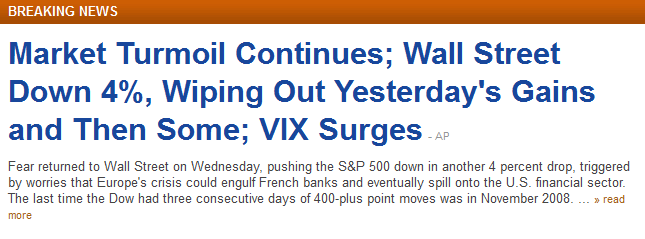Best Blogs of the Week
With Hurricane Irene dominating the news (rightfully so) and many people returning from a final summer vacation, we thought to post mid-week. Over the last nine days, the blogosphere has been dominated by volatility. With recent market swings, August can be a good time to reintroduce that topic. Here are three posts that specifically lend a hand to the financial advisor with jittery clients.
- Vanguard – this post shares the value of re-balancing infrequently.
- Russell – this post reminds investors to consider long-term perspective and the importance of a diversified portfolio.
- American Century – and in case anyone is looking for data on the volatility, this post does a nice recap.
Have a fun Labor Day; we’ll return mid-week with “Best Blogs of the Week.”






